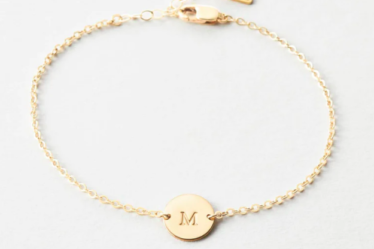
Culture just isn’t what it used to be, and the internet’s to blame.
The argument is one of those put forth in “Status and Culture,” a new book from author W. David Marx. Fashion audiences might know Marx’s name from his previous work, “Ametora,” which recounted the story of how Japan mastered and commercialised American style. His new work tackles what he dubs “The Grand Mystery of Culture” — basically why humans flock to certain practices and fashions for no good practical reason.
Of course, practical reasons or judgments of quality often serve as alibis we use to justify our flight to new trends or status symbols. The materials and craftsmanship of a Birkin bag are unmatched, shoppers may tell themselves — even though it’s not really more effective for carrying stuff than a bag that can be purchased for a fraction of the cost. Appeals to beauty or authenticity can also serve as pretexts, driving changes from lapel widths to the skinniness or bagginess of our jeans that don’t have any real functional purpose.
This sort of behaviour isn’t just found in modern consumer societies. “Isolated tribes change their hairstyles over the years without subscriptions to GQ,” Marx writes in a chapter on fashion cycles. You might say trends created the fashion industry, not the other way around.
Central to these cultural workings, in Marx’s view, is our pursuit of status and the ability to show it off. An effective status symbol needs some cost that makes it exclusive, whether its actual price tag (the Birkins, again) or just the knowledge to appreciate it, which only others with that knowledge will recognise, as in the case of, say, obscure Japanese labels.
The internet, however, is disrupting how brands, products and everything else accrue status value. With the arrival of mass media and mass production a century ago, cultural capital like insider knowledge arguably became more important than straight-up shows of wealth for projecting status and inspiring emulation. But today, there’s instant access to just about any information or item you could imagine, contributing to a “cultural stasis” where seemingly nothing has staying power, Marx argues, and for as fast as everything moves, culture never seems to advance. It helps explain the retro-mania that makes fashion today look like a repeat of the past rather than its own identifiable period in fashion history.
“In many ways this book came from thinking about what is wrong with culture now and realising the only way I could explain that is if I, first of all, had some sort of theory of, or at least a hypothesis on, how culture works and what makes up cultural value to start with,” Marx said in an interview.
BoF spoke to Marx about how the internet has changed status signalling, the effects on culture, NFTs and the value of craft in a digital age.
You say the internet has diminished status value. How do you think it has done that?
In the 20th century, information and access to products themselves became signalling costs. The internet first and foremost just destroys that barrier to information. Everything can easily be discovered on the internet. And then [it affected] distribution and access to products.
Even in the 1990s, I was interviewed for this article in the New York Times about A Bathing Ape because people were trying to buy A Bathing Ape in New York. It was more or less impossible because you had to either go to Japan, which no one was really doing at the time; you had to go to one store in New York that sometimes had it; or you had to go to London to one store that had it. That was really it. So just access to A Bathing Ape alone had these very high signalling costs that made it a great marker of elite distinction and people thought it was very cool because it was so scarce.
Today there’s really nothing you can’t buy and get shipped to you anywhere at any time. You can wake up in the middle of the night and order it. But even more than that, there are also ripoffs of everything. If you want something of a certain style that you see on a runway, you could get it immediately. So there are no barriers to information and there are no barriers to product.
You make clear in the book that you don’t think this is a neutral process. It’s actually a bad thing. It’s making culture boring because the literal cost, in terms of dollars, becomes the main signal rather than any cultural capital involved.
That’s right. I don’t know if you’ve seen these videos, but there was this one video of someone going around LA and asking people about their outfits. As they’re going through each garment, they’re not saying the brand, they’re just saying the cost. I saw that and said, “Wow, this is just a different world,” especially because in my generation you’d be ashamed to talk about the cost or you try to downplay it.
Cultural capital became a dirty word. After [sociologist] Pierre Bourdieu more or less wrote that appreciation of complex and abstract art was a class signifier and everyone started understanding that, there was an obvious backlash to say, “We should be more permissive in how we appreciate art from high to low, so that artistic appreciation does not become simply a way to replicate the class structure.” That comes from a good place in the sense that it is correct that artistic innovation can happen anywhere. Low culture can be as rewarding as high culture. But what it more or less tried to do was to eradicate cultural capital as a form of exclusion. It pushed [status signalling] back to economic capital, which I don’t think was anyone’s intention. It’s just a system effect of that change.
My argument’s not, “We need to bring back elite cultural capital as a way to discriminate against uneducated people.” That’s not a good argument. It’s simply that there should be some mechanism that rewards what I call symbolic complexity, which just means really deep, interesting, difficult cultural exploration and doesn’t just necessarily dismiss it as pretentious, snobbish and exclusionary. Instead, understand that this kind of innovation is what moves the entire cultural ecosystem forward.
In fashion specifically, does craft lose value in the internet age, because you could argue that’s a form of symbolic complexity?
I think it’s the opposite. I think craftsmanship has seen a comeback. Because everything is available, craftsmanship is a way to go back to things of scarcity and rarity. At the same time, because everything is more or less available and made by machine, the narrative for brands has become much more difficult. Brands have to go back to craftsmanship in order to create a story that justifies paying high prices.
Obviously there are different kinds of status signalling that happen online. NFTs found a way to introduce scarcity in digital goods by letting people prove ownership of something like a jpeg. You saw some NFT collections like Bored Ape Yacht Club become status symbols within the crypto community first and then become more mainstream. Does that suggest signalling does still happen in the same way but we’re just in the process of finding new symbols and methods of signalling as more culture is created online?
I do believe they are status symbols. I just think they’re weak status symbols because status symbols need three things. They need signalling costs: there has to be something that makes them difficult to acquire. They have that. They’re expensive or maybe they’re rare. It’s still quite difficult to acquire one. But they lack the other two things that good status symbols have, which is an alibi — there’s no reason to buy it other than financial speculation, or the fact that you want to buy that symbol. And then it also does not have associations with preexisting high-status groups. Bored Apes got close to that when Madonna and maybe Steph Curry and some of these celebrities started to buy Bored Apes and put them in their profile pics.
But the main thing about status symbols is there’s supposed to be behavioural residue. They have to have some function that can be a natural part of people’s lifestyles and that will make them not just a fad but more of an authentic part of people’s lifestyles that then becomes aspirational to other people.
It seems like we’re always going to have a younger generation that comes along and wants to differentiate itself and push back against the older generations. Won’t they just naturally create their own cultural capital and status symbols? Has that changed in any way?
If you’re living on the internet and you’re living in TikTok, there is a daily demand to know the grammar of that platform in the sense you have to know what memes are hot, what jokes are in, which ones are not. That all is information based, and I do get a sense that’s where a lot of the energy is going. I don’t get a sense that the energy is going towards creating new forms of music that are alienating to us, creating new forms of clothing that are alienating to us. You just don’t see that in young people as much.
But with TikTok, I think they’re making a form of video content that’s incredibly alienating to adults, because most adults pick up TikTok and they’re like, “I’m out.” What a lot of these internet platforms prove is that young people can create barriers to old people by just having the worst, lowest-common-denominator taste ever in 15-second videos. You don’t have to be artistically difficult. So there is distinction going on among young people. It’s just not in that realm that we’re used to, which is symbolic complexity or artistic complexity.
One thing I feel like many of us have heard for years is that fashion trends don’t work like they used to. Because everything is immediately visible and available right after it pops up on a runway or on TikTok, they bubble up and dissipate so fast that there are few, if any, monolithic trends in a given year. If everything just exists online for 15 minutes, will anything be able to develop the historical value you talk about in the book that makes it worth revisiting by future generations?
What was important about a fashion trend, it’s not simply the adoption or the purchase, it’s about people adopting it into their identities in a way they believe is authentic. With that lag being so short between an idea popping out and it diffusing across society, or potentially diffusing across society, there’s no time for people to authentically adopt it in a way that they really make it part of their identity. Without that, it does not manifest as a trend in society, and so you get these kind of micro-movements. Maybe you would even call them nano trends. With culture, it’s much more fleeting.
But then over time, it still is drifting from certain things. We’re not in a skinny-jeans mode anymore. Even if everything goes, if you look at skinny jeans, you still feel like it’s slightly outmoded. The J.Crew baggy chinos are kind of interesting to me because if you’ve been looking at Popeye magazine for the last four years, they started having a really big silhouette. That all came from this one stylist, Akio Hasegawa. He was obviously reacting to the fact that everything had become so shrunken with Thom Browne, but also just men were starting to wear clothes to actually fit. But then once that happens, it opens the door for bigger silhouettes.
So to say there are no trends, I don’t think is true. The fact that we’re moving from everything being slim to everything being big again, that is a trend. It’s just a really old-style, slow-drift macro trend, rather than the intense, 20th-century, all-encompassing micro trend that we used to see.
This interview has been edited and condensed for clarity.



